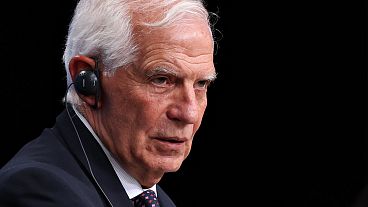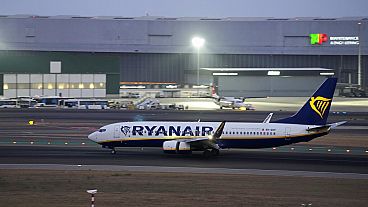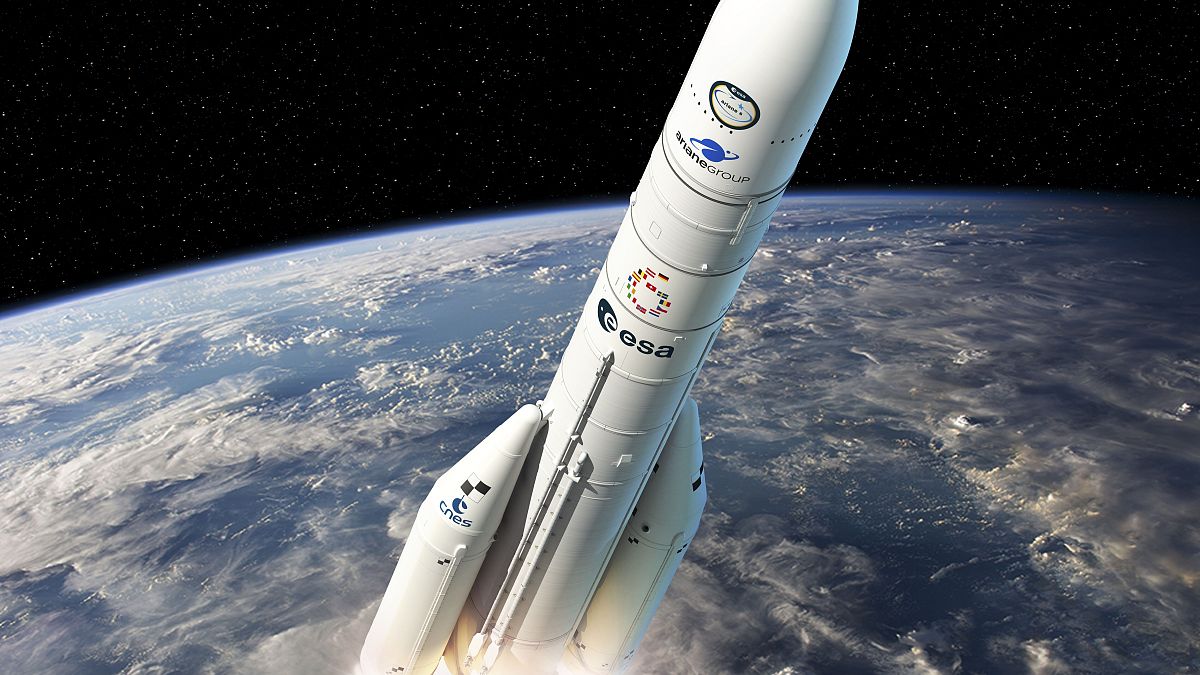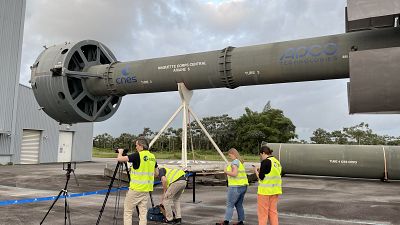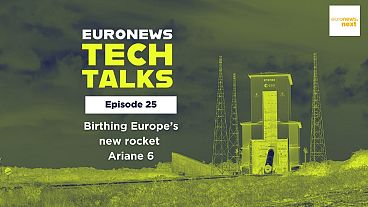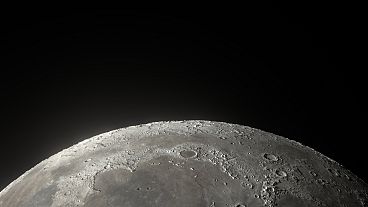Europe's launcher Ariane 6 took off on its inaugural flight on Tuesday night.
Europe’s standing in space was hanging in the balance as the Ariane 6 heavy-lift launcher took off on its maiden voyage on Tuesday.
Ariane 6 has been in development for almost a decade and aims to put Europe on the map for launching satellites and giving Europe access to space. But with tough competition from Elon Musk’s SpaceX, is there really space in space for Ariane 6?
The launcher successfully began its inaugural flight on Tuesday night.
When is it and how to watch it
Liftoff was from Europe’s Spaceport in Kourou in French Guiana on July 9.
Liftoff was scheduled for 20:00 CEST and there was a four-hour window for it to complete its mission.
What could go wrong?
A lot can go wrong in the test launch. In 1996, the first Ariane 5 blew up after 40 seconds.
Such test launches have a high failure rate.
“Statistically, there’s a 47% chance the first flight may not succeed or happen exactly as planned,” Josef Aschbacher, director general of ESA, said in May.
Why the delay?
The original launch was scheduled for 2020, but technical issues delayed the launch and the COVID-19 pandemic further complicated matters as did the war in Ukraine, since Europe had space ties with Russia.
What happened to Ariane 5 and how is Ariane 6 different?
Ariane 5 retired in July 2023 after being a workhorse for 27 years. It performed the first ESA missions to a comet (Rosetta) to Mercury and to Jupiter.
The Ariane 6 is set to take its place with the aim of being significantly cheaper than its predecessor. However, it has been criticised for being expendable, unlike SpaceX which has a reusable launch system to reduce costs and be more sustainable.
“Any rocket that is not, or mostly not reused will not survive,” Elon Musk told the Viva Tech conference in Paris in May, explaining that not doing so is not cost-effective for a company.
The Ariane 6 rocket will be produced in two main versions. The medium-weight Ariane 62 is the first version. It can carry 10.3 tonnes of cargo in low Earth orbit and 4.5 tonnes into geotransition. It will cost €75 million.
The second version is the Ariane 64, which weighs 870 tonnes and can launch 21.6 tonnes in low Earth orbit and 4.5 tons into geotransition. It costs €115 million, which is much pricier than launching SpaceX’s Falcon 9, which is $67 million (almost €62 million).
What will be launched into space?
Tuesday will see the launch of the Ariane 62, which will carry nine CubeSats (small satellites), provided by European companies and research institutions.
European made
Up to thirteen European countries, led by France, have collaborated on the development of Ariane 6.
Italian aerospace companies have provided propulsion systems. Belgium's science policy office, BELSPO, and Belgian companies have contributed their expertise in areas such as telecommunications and satellite technology.
Spanish companies have been involved in structural components and ground support equipment.
Swiss companies have contributed precision engineering and components to the Ariane 6 programme, particularly in areas such as guidance and navigation systems.
Dutch companies have provided expertise in areas such as avionics and payload integration for Ariane 6 missions.
Could Ariane 6 have crewed spaceflights?
While this is not the current goal of Ariane 6, Toni Tolker-Nielsen, ESA director of space transportation said in an interview that it could be done.
“Ariane 6 can be a human-rated launcher with some modifications. But we can also invest in a safety system for the capsule to make it safe for the crew in case of launch failure,” he told SpaceNews.
“We have a contract to find the best trade-off between these two options in the next year. Any decision to then pursue these options lies with ESA Member States,” he added.


